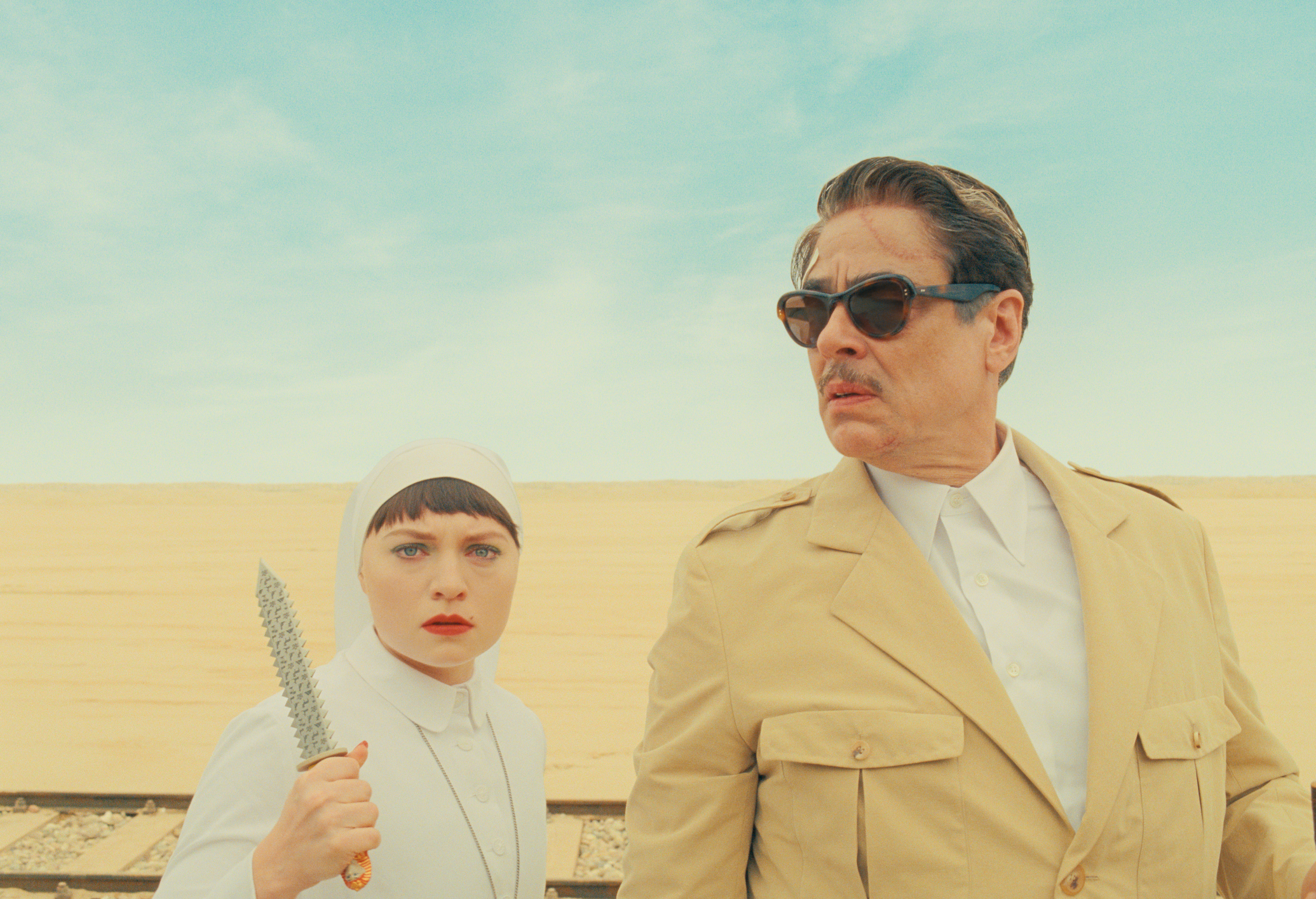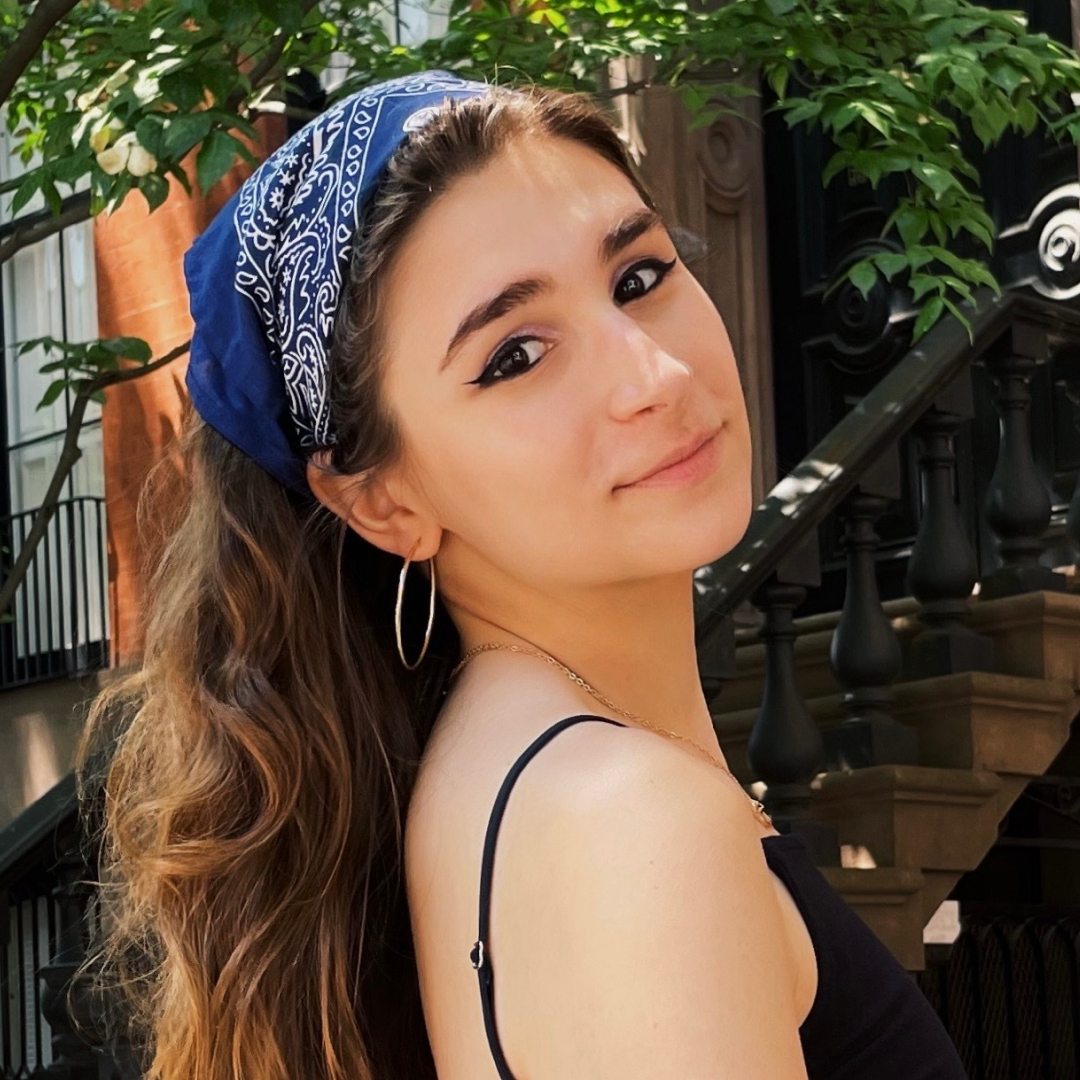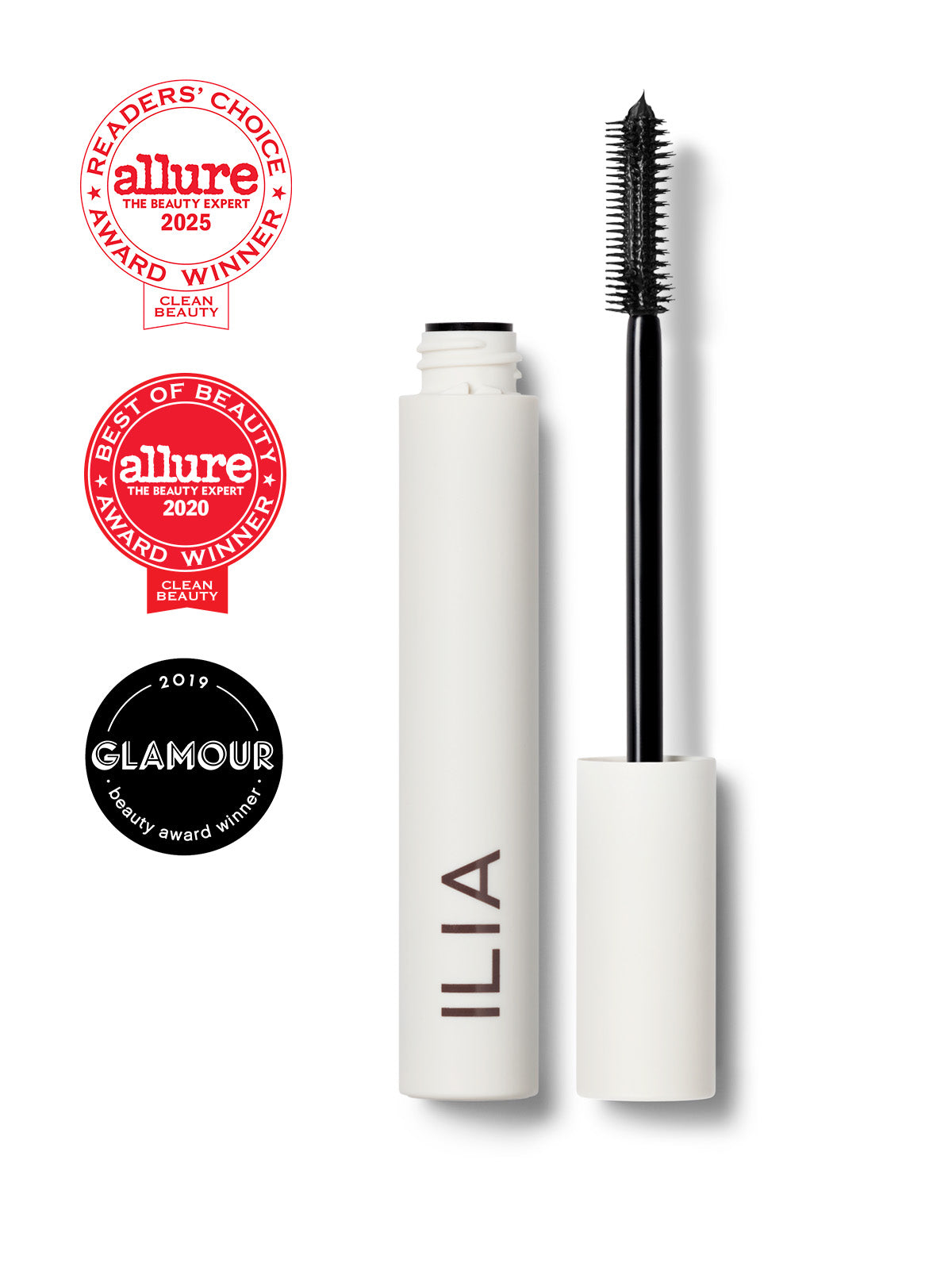Mia Threapleton May Play a Nun in 'The Phoenician Scheme,' But Her Makeup Evokes Earthly Delights
Heike Merker, the makeup designer on the new Wes Anderson film, breaks down Liesl's eyeshadow and lipstick.


This story contains minor spoilers for The Phoenician Scheme. When Mia Threapleton’s character Liesl reconnects with her father Anatole “Zsa-zsa” Korda (Benicio del Toro) in Wes Anderson’s The Phoenician Scheme, it’s been 15 years since he sent her away to a convent. Since then, Zsa-zsa has continued his questionable wheelings and dealings to remain a successful baron of industry, while Liesl has taken solemn vows to become a nun. But despite Liesl’s initial detest for his opulent lifestyle, it’s clear that the apple doesn’t fall too far from the tree because she is, by all accounts, a chic nun.
Rather than modestly concealing her hair, Liesl’s shaggy bangs peek out from under her veil. She wears a habit adorned with a Peter Pan collar and buttons. As the young nun becomes more enmeshed in her estranged father’s world of luxury throughout Anderson’s latest (which arrives in select theaters on May 31), she doesn’t necessarily stray further from the Heavenly Father. She does, however, start finding even more beauty in earthly delights—makeup being one of them.

Liesl (Mia Threapleton) when she reconnects with her estranged father at his estate.
After initially wearing her face bare, as any devout nun would, Threapleton’s character starts to fashion herself in emerald eyeshadow and a bright red lip. As soon as she joins her father on his journey to secure the funding for his latest infrastructure scheme, Liesl’s decadent ‘50s look, designed by hair and makeup designer Heike Merker, never leaves her face. Like other iconic, deadpan women in Anderson’s filmography, from Margot Tenenbaum to Suzy Bishop, she’s his latest character with a signature look that tells a story in and of itself.
Merker explains to Marie Claire over Zoom that it wasn’t explicit in the screenplay (written by Anderson and his frequent collaborator Roman Coppola) when Threapleton would start wearing powder and rouge, but she and the writer/director discussed that it would happen when she starts “to change.” “She is still keeping her nun dress, but whatever she’s touching [has changed],” says Merker, noting how Liesl trades her white tights for green stockings, her corncob pipe for one that’s bejeweled, and her traditional rosary for secular, lavish beads (designed by Cartier). “When you work for Wes, it’s a wonderful color collaboration between props, costume design, and makeup. Every little detail makes sense in his movie.”

Liesl and Zsa Zsa Kordan (Benicio Del Toro) become the target of assassins and spies while trying to launch his latest enterprise.
While Merker did color tests with Threapleton holding her bedazzled pipe, her tights were the genesis of the look. “We really had to match the green stockings,” says the makeup artist, who also worked with Anderson on The Grand Budapest Hotel. “We also had a moment when we thought, ‘Oh, maybe it should be blue,’ but then the green was just so much more special.” She crafted the right hue by combining several shades on a MAC palette. (Her lipstick, meanwhile, was Chanel combined with powder, and she wore Armani foundation and ILIA mascara.)
“When you look at [Anderson’s] movies, there is a certain style we all know and we all love, and there's also a color palette you can think of and use from,” Merker says.

Merker told Marie Claire that the blood was designed not to look realistic, but to match Liesl's shade of lipstick.
Any resemblance to Liesl’s makeup of stained-glass windows or the colors in Catholic iconography can only be attributed to divine intervention, as Merker says she didn’t look directly to the faith for inspiration. She turned to 1950s films and referenced traditional images of nuns to consider how Liesl could stand out even before putting on makeup. “No nun has a fringe [haircut],” she says. “We started with a longer fringe, then it became shorter, then straight, and then we cut it into the fringe so that it was like [the bangs] zigzag. No nun has that.”
Get exclusive access to fashion and beauty trends, hot-off-the-press celebrity news, and more.
Liesl's nunhood is one of many ways The Phoenician Scheme speaks to themes of faith and morality. Spending time with his daughter leads Zsa Zsa to wrestle with his corruption and how to remedy their relationship (not to mention wonder how he’s survived multiple near-death experiences), leading him to quite literally talk to God (Bill Murray). Alternatively, Liesl admits that she never hears anyone answer her prayers. But eventually, the two find a little Heaven on Earth in each other. Liesl accepting her father’s luxurious gifts—and styling her makeup to match them—is like a little form of sacrilegious communion to get there. Amen to that.

Sadie Bell is the Senior Culture Editor at Marie Claire, where she edits, writes, and helps to ideate stories across movies, TV, books, music, and theater, from interviews with talent to pop culture features and trend stories. She has a passion for uplifting rising stars, and a special interest in cult-classic movies, emerging arts scenes, and music. She has over nine years of experience covering pop culture and her byline has appeared in Billboard, Interview Magazine, NYLON, PEOPLE, Rolling Stone, Thrillist and other outlets.


